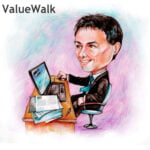With the FANGs (née FAANGs, née FAAMGs) in the news again, for good and bad, we thought it would be a good time to update our analysis that first looked back at 2015. Once again, we find less going on than first meets the eye. Let me try a sports analogy. It’s always interesting to report who won the Super Bowl. But, it’s not at all interesting to report that someone won the Super Bowl. Now, it would indeed be interesting to report if the winning team did something truly outsized like post a 19-0 record for the season. A lot of the reporting of the FANGs returns has a strong whiff of a 19-0 season when statistically it turns out much more like reporting that, yet again, the Super Bowl indeed had a winner. Remember, if you go looking explicitly for extremes you’re usually going to find them. The question then becomes, how extreme are the extremes this time around compared to the extremes you normally expect to find? That may be a horrible sentence, but we hope it’s an interesting economic exercise. To that end my colleague Todd Hazelkorn has updated and expanded the earlier FANGs study (and examined some other permutations of extreme contributions) through 2016 and YTD 2017. Take it away Todd.
SNAFU: Situation Normal, All-FANGed Up (An Update)
Early in 2016, Cliff wrote a blog post about the FANG stocks. The widespread claim then was that market performance was “narrow” in the sense that only a handful of stocks, the FANGs in particular, were responsible for the vast majority of market gains in 2015. We evaluated this claim by comparing 2015 to the preceding 20 years and found, notwithstanding the hype, that 2015 was a perfectly ordinary year in terms of the impact of the top 1, 2, 5, etc. stocks on the performance of the S&P 500. That didn’t mean the claim of narrowness was wrong, or that it wasn’t the FANGs that drove much of the overall market’s performance. It just meant that this situation was completely normal.
Now, a year and a half later, the FANGs are again in the press with similar claims they are the primary drivers of market performance (with a modest sell-off on June 9th and 12th perhaps confirming the implied fears that come with many of these observations). For the five months ending in May of this year, Google (now Alphabet but still the G in FANG)2, and Amazon were two of the top 3 contributors to market performance. As a result, there has been a renewed interest in the press regarding the FANGs and about another overly “narrow” market rally (there has also been some surgery to the list — Apple has been added by some turning the ‘FANGs’ into the ‘FAANGs’ and a recent WSJ piece added Microsoft and removed Netflix from the list so perhaps it is now the ‘FAAMGs’).3
Maybe the contribution of the FANGs, FAANGs, or FAAMGs in 2015 wasn’t exceptional. However, given the continued apparent outperformance of this group, has its impact on index returns over the past two years together been exceptional? Again, “exceptional” here means versus what the top few stocks usually contribute.
The answer to that question is, again, no.
Any way you slice the data, there isn’t anything truly exceptional about the last two calendar years even if you extend the period to include the strong 2017 FAANG performance through May. In this case the “why” is pretty simple — calendar year 2016 was not a particularly great year for the FAANGs (and you may notice the news stories indeed died down for a while). In 2016, some older economy names like JP Morgan and Chevron were the top contributors to S&P 500 returns, while the FAANGs performed more in line with the rest of the market.
Here is the (revised) exercise. For 2015, 2016, as well as the first five months of 2017, I identified the 20 companies with the highest contributions to S&P 500 performance. I then looked at the decline in performance by removing the top 1, 2, 3, up to 20 companies and re-weighting over the remaining constituents (see Cliff’s original post for more details). Figure 1 shows the top five contributors over each of the three separate time periods. Facebook, Amazon, and Google were indeed in the top five in 2015 (Netflix was number 8). However, none of the FAANGs (FANGs or FAAMGs or Fin Fang Foom4) cracked the top 20 in 2016. Facebook, Amazon, and Google rejoined the top five for the first five months of this year, with Netflix at number 16. Apple was the top contributor for the first five months of 2017 (hence the recent need for the extra A!).
Figure 1: Top Contributors to S&P 500 Performance
Sources: AQR and S&P Compustat. Broad-based securities indices are unmanaged and are not subject to fees and expenses typically associated with managed accounts or investment funds. Investments cannot be made directly in an index. Past performance is not a guarantee of future performance.
Because 2016 wasn’t a great year for the FAANGs, the return contribution of the top five performers (2.9%) for the two calendar years 2015-2016 is actually below its historical average (3.9%). There were extremes but the extremes were less extreme than usual. In figure 2, I show the impact of removing the top performers (from top 1 to top 5) as well as the “standard deviation event” of this result, which is the impact for the two years 2015-2016 minus the average impact of two year periods from 1995-2014, divided by the volatility of the two year impacts. Even if I look at the two years ending May 31st of 20175 — meaning I include the last five months where some of the FAANGs re-appeared — the contribution to returns of the top five stocks is only at the historical average. So even including the recent resurgence, gains have not been particularly “narrow” at least as proxied by the impact of the top five contributors to S&P 500 performance.
Figure 2: Two Year Impact of Top Contributors
Sources: AQR and S&P Compustat. Broad-based securities indices are unmanaged and are not subject to fees and expenses typically associated with managed accounts or investment funds. Investments cannot be made directly in an index. Past performance is not a guarantee of future performance.
So what is really going on here? Stripped of the acronyms, some large technology sector stocks outperformed in 2015, then didn’t outperform in 2016, and then outperformed again in the first five months of 2017. Is this a remarkable coincidence or something that happens all of the time?
The first thing to consider is that the FAANGs are not just a random collection of five stocks picked from the S&P 500 that continue to re-appear in the top contributors list. They are among some of the largest companies by index weight. To perhaps state the obvious, when examining top index contributors, starting index weight matters a lot. Mechanically, the return impact of removing a name from the S&P 500 index is (approximately) equal to the weight of the name in the index times its outperformance relative to the index. This means that if a company that is 1% of the index is going to contribute 1% to index returns, it needs to outperform by 100%. If a company that is 0.05% of the index is going to contribute 1% to index returns, it needs to outperform by 2000%! So, your contribution to overall performance is partly your current performance but partly a lifetime achievement award based on where you began.
As of the end of 2016, there were only 18 S&P 500 constituents with index weights greater than 1%. Going back to 1994, more than 60% of the top five contributors to S&P 500 performance over any five month period have had index weights of over 1%. Facebook, Amazon, Apple, and Google are all companies with index weights greater than 1% of the S&P 500.
Further, companies from the same sector tend to be top contributors at the same time (this isn’t too surprising — companies in the same sector will tend to outperform or underperform together). For instance, in more than 1/3 of the five month periods since 1994, three or more of the top five contributors were from the same sector (as the FAANGs are now though one could quibble whether some should be classified as tech, media, or retail).
Putting all of this together, it means that some of the FAANGs will be back in these stories (for positive or negative impact) soon enough over some ex post time period (3 months, 5 months, 1 year, we’ll figure it out after it happens!). And it will likely be just as normal then as it is now and as it was after 2015 when Cliff first noted this.
Of course, it’s only “likely” that it will be normal. Abnormally large movements do happen. Here that would mean extremes that themselves are really extreme versus historical extremes. But we simply have not seen them lately despite some rather breathless reports that would make you think otherwise.














